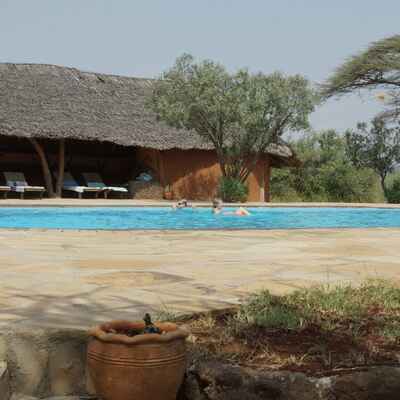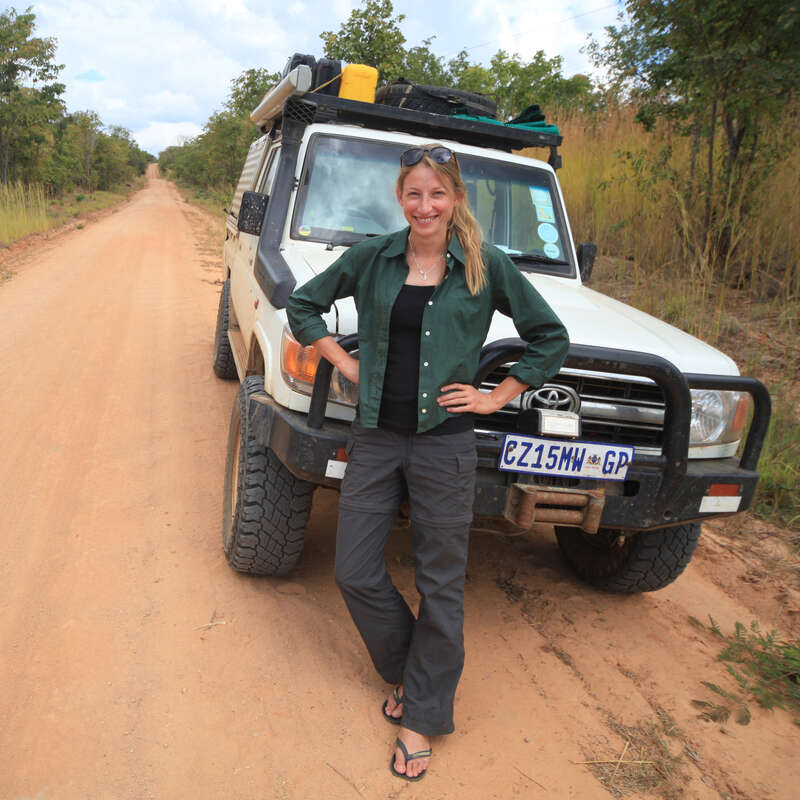About Tumbili Cliff Lodge
Tumbili Cliff Lodge is a pleasant, small safari lodge on the western shore of Lake Baringo in the northern Rift Valley.
Being a few metres above the lake surface, it has avoided the problem of the lake's rise in water level since 2014.
Tumbili Cliff is run with understated professionalism and we were given an excellent, thoughtful tour of the whole property. While we haven't yet stayed here, we're looking forward to doing so, and to sampling their boating and birding activities in this relatively little visited part of Kenya.
Our view
Tumbili Cliff is run with understated professionalism and we were given an excellent, thoughtful tour of the whole property. While we haven't yet stayed here, we're looking forward to doing so, and to sampling their boating and birding activities in this relatively little visited part of Kenya.
Accommodation
6 rooms
Children
Good for any age
Open
All year
Activities

4WD Safari

Birdwatching

Boat trip

Fishing

Guided walking safari

Private activities
Traveller reviews of Tumbili Cliff Lodge
2 real, un-edited reviews from Expert Africa's travellers.
Arrived 29 Dec 2018, 4 nights
"Beautiful Baringo"
Overall rating: Good
Arrived 17 Mar 2016, 2 nights
"Tumbili Cliff Lodge review"
Overall rating: Excellent
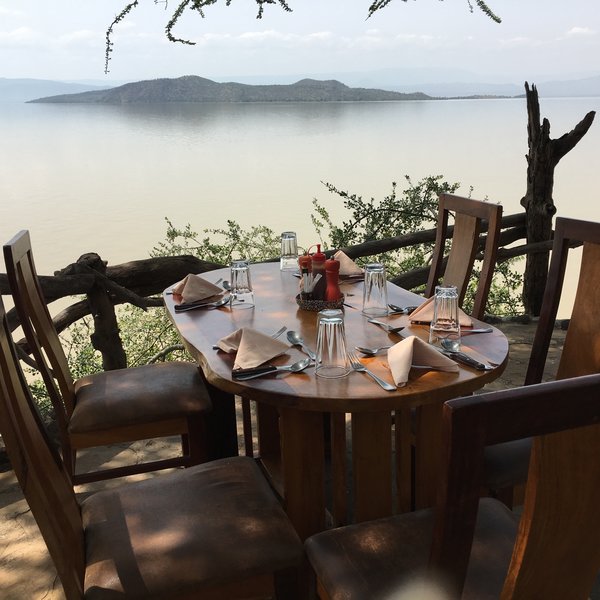
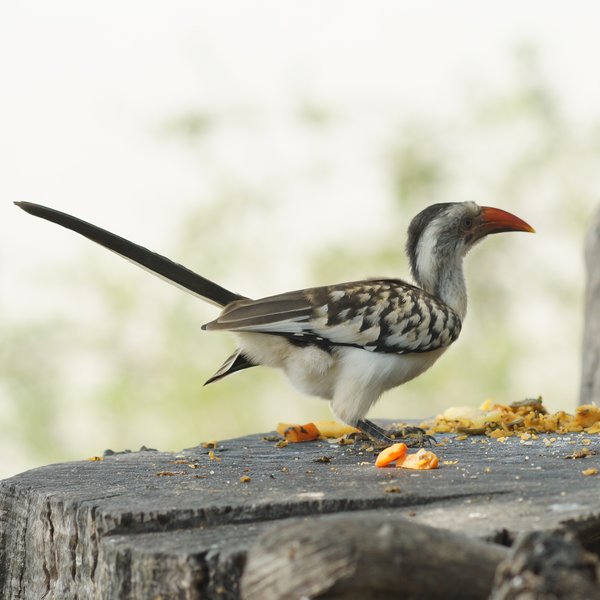
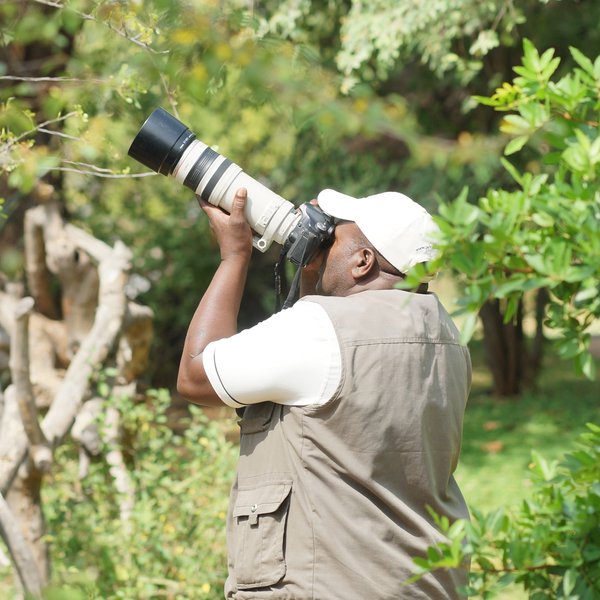
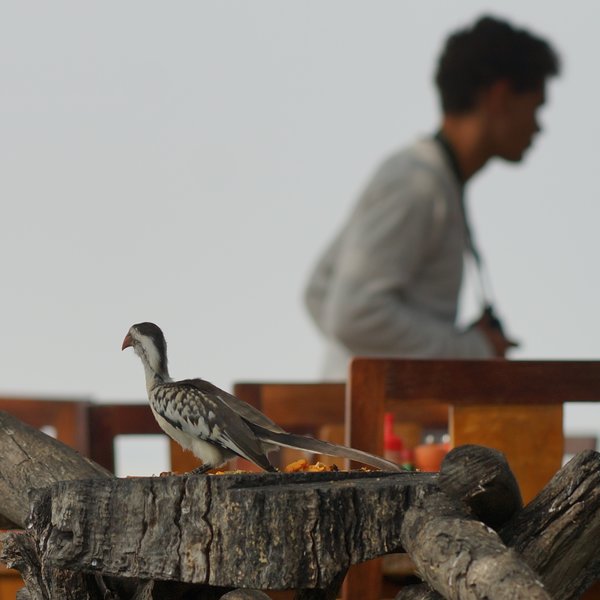
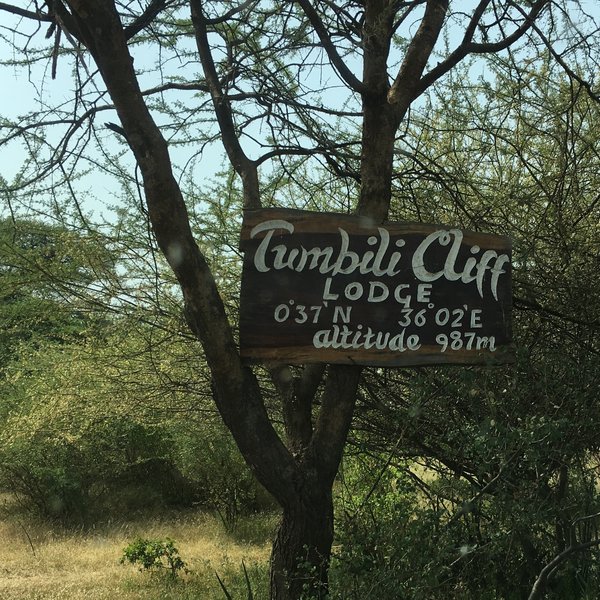
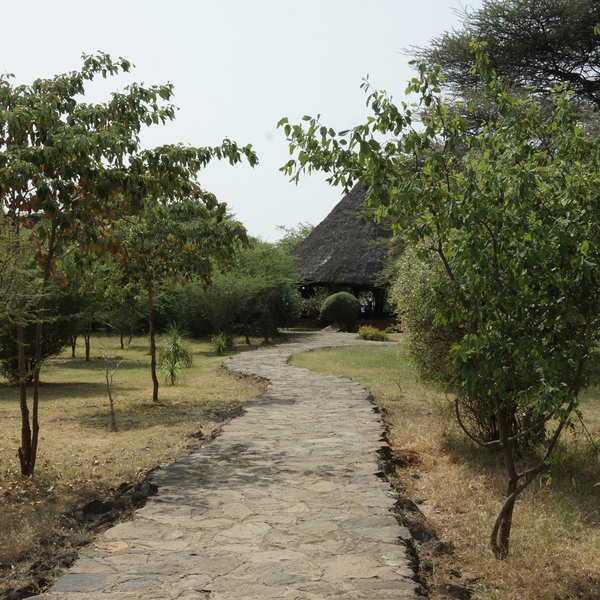
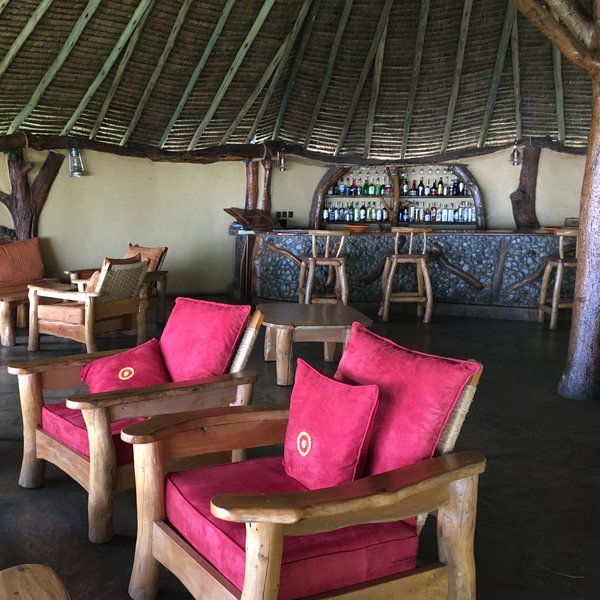
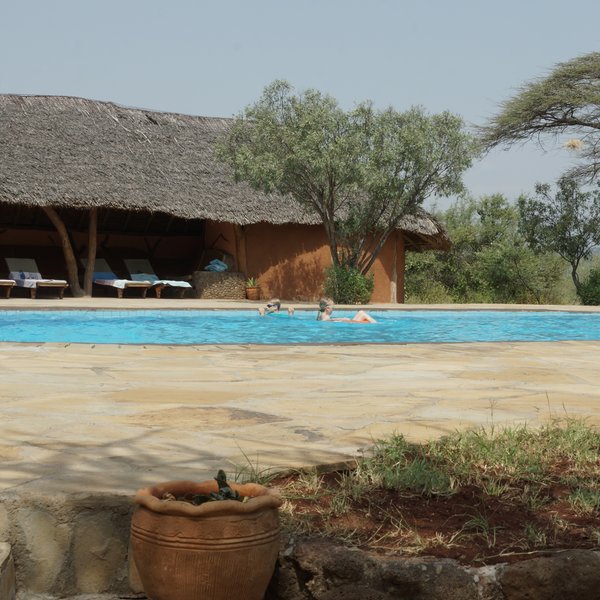
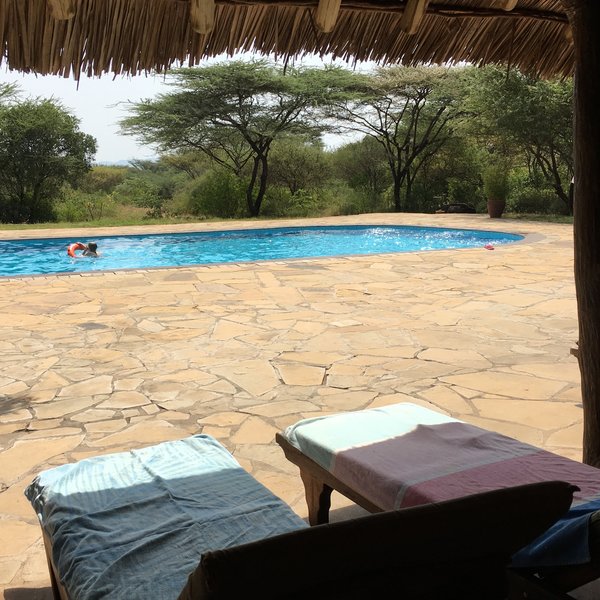
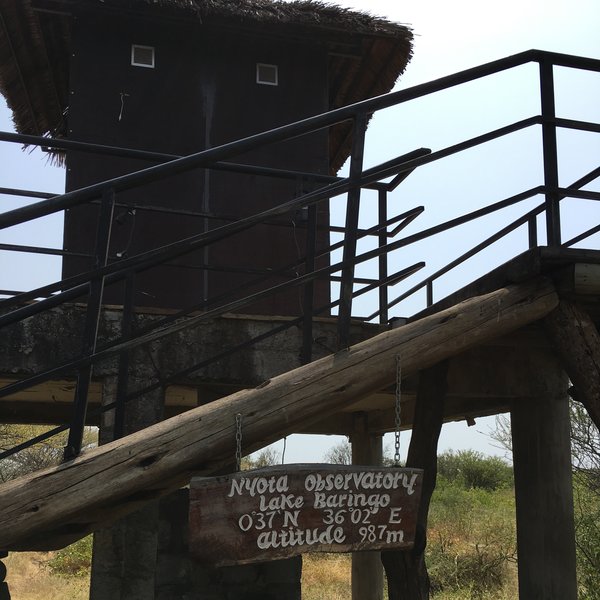
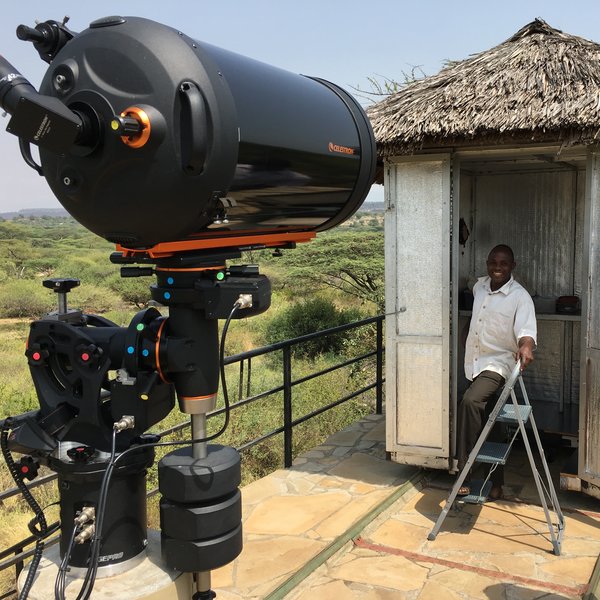
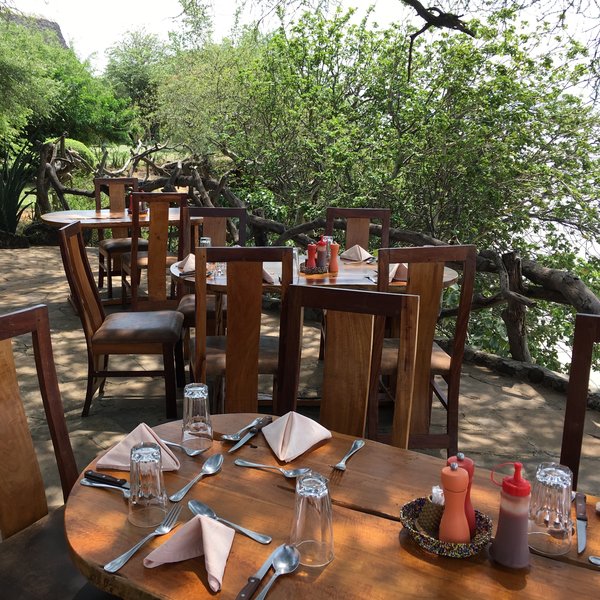
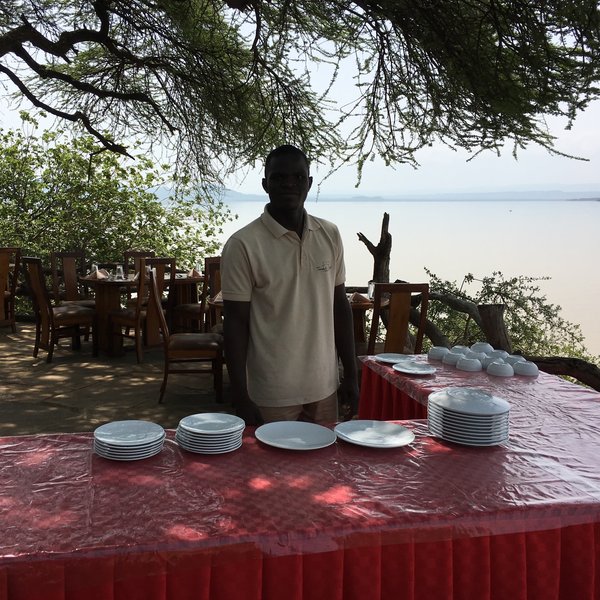
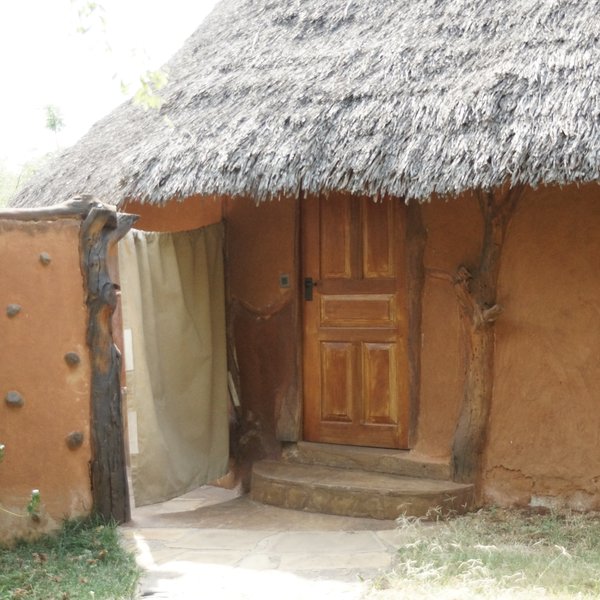
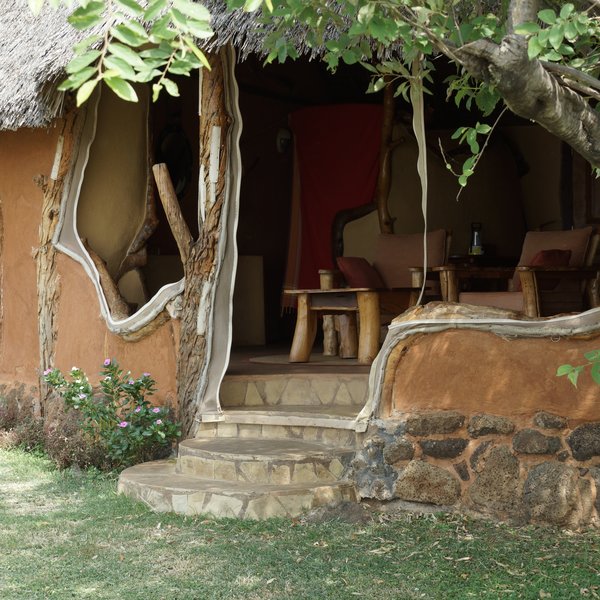
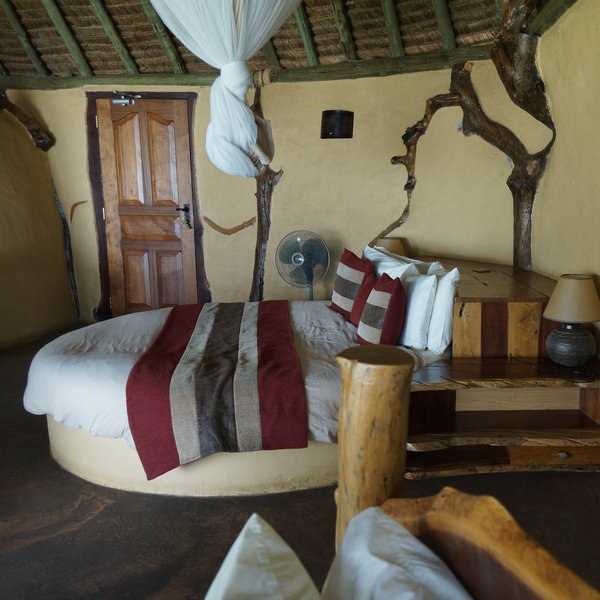
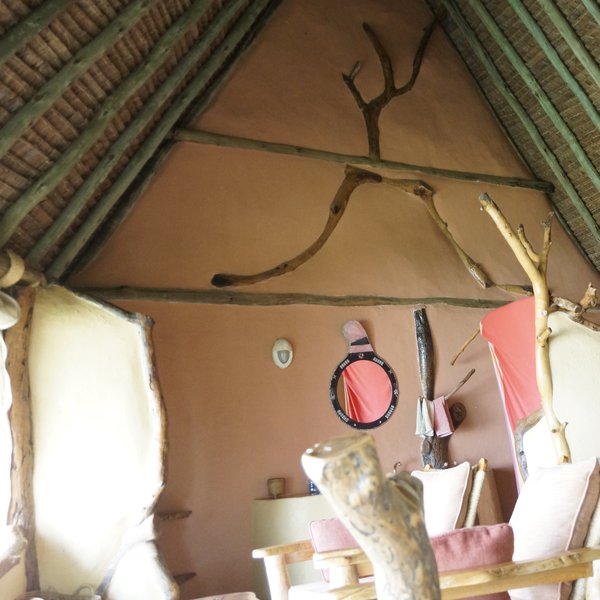
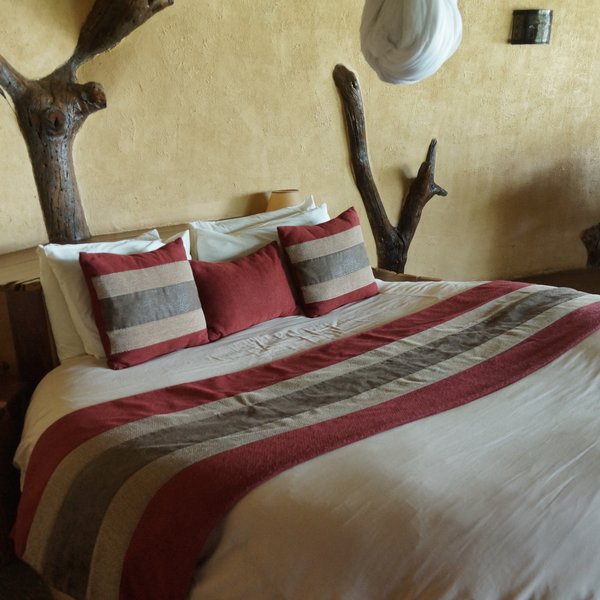
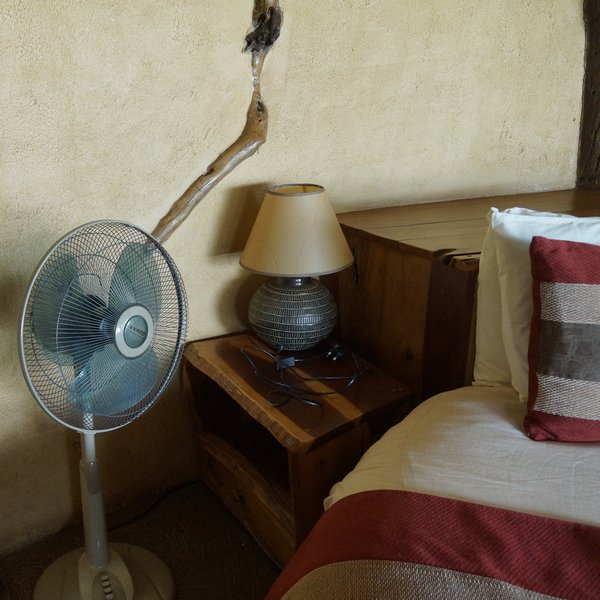
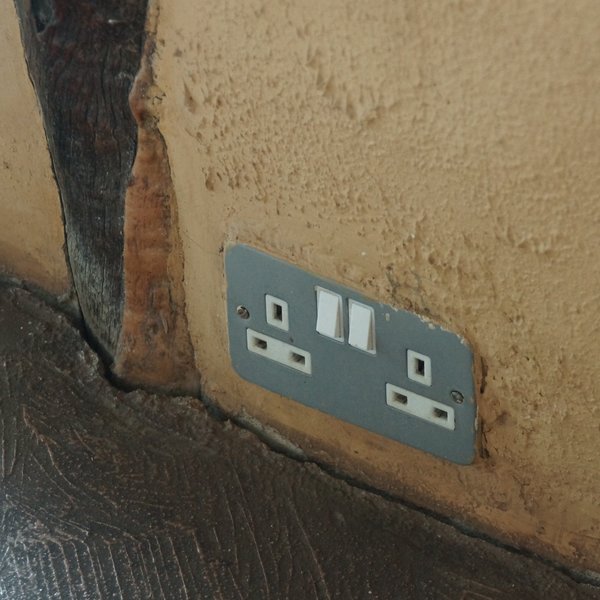
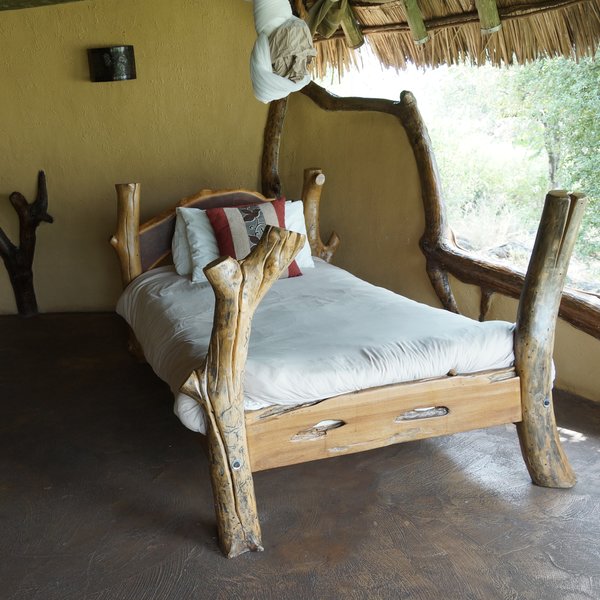
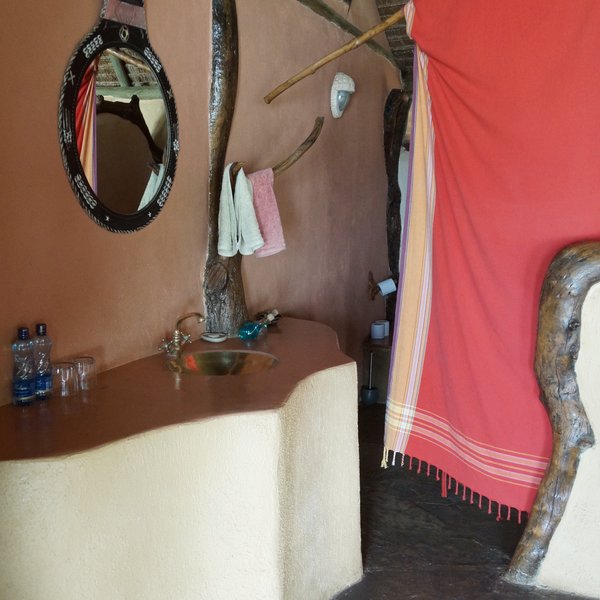
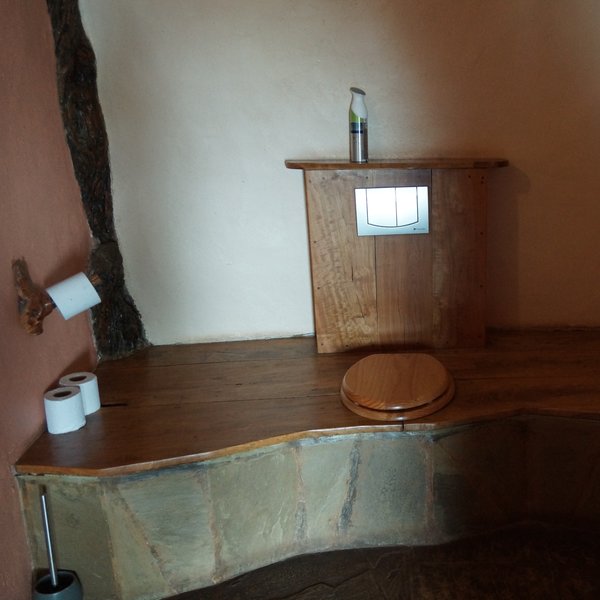
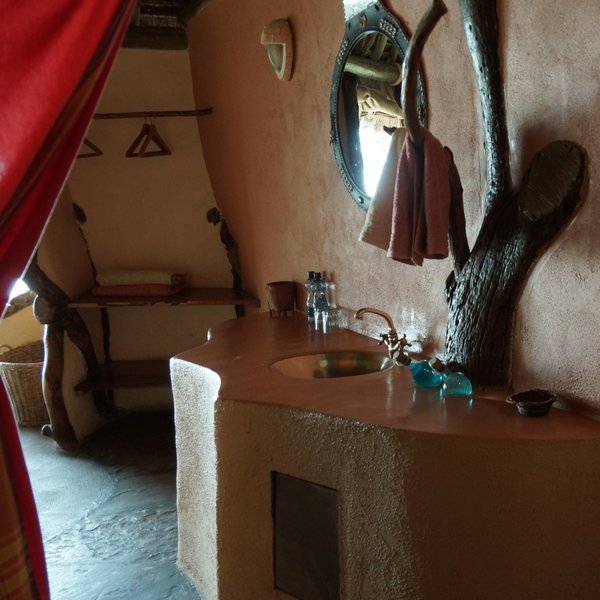
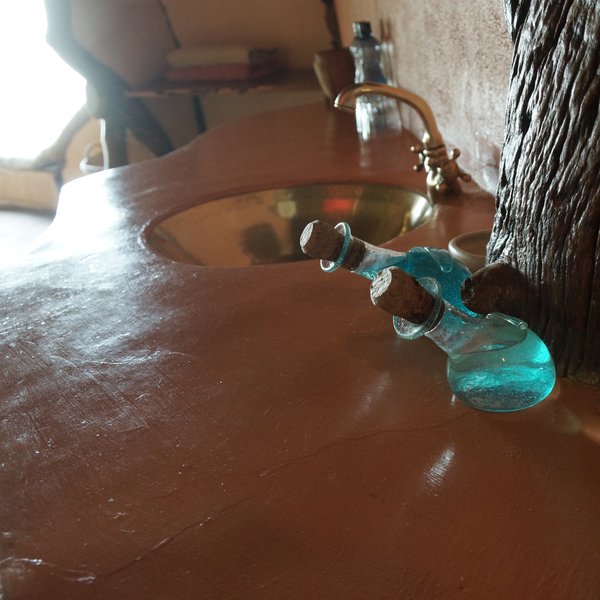
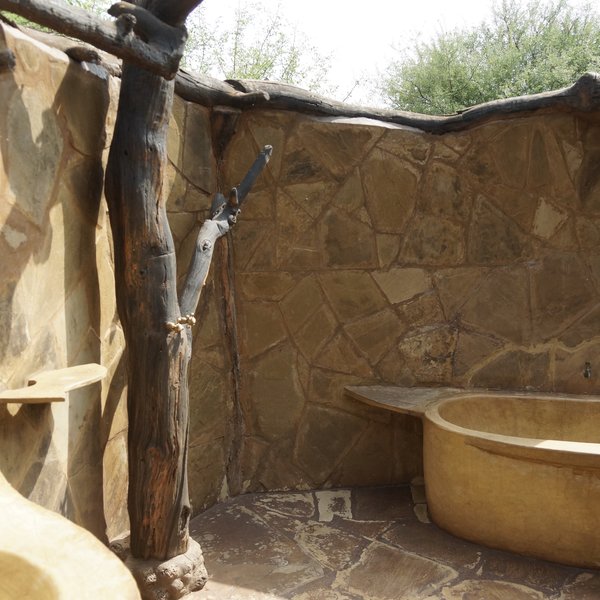
Expert Africa's gallery
When we travel we take lots of photos ourselves to give you a real and un-edited view of the safaris. See our 26 pictures of Tumbili Cliff Lodge to get the candid view.
View galleryTumbili Cliff Lodge: Our full report
Tumbili Cliff Lodge is a pleasant, small safari lodge on the western shore of Lake Baringo in the northern Rift Valley.
Being a few metres above the lake surface, it has avoided the problem of the lake's rise in water level since 2014.
Arriving by road at Tumbili Cliff you drive through the impoverished-looking village of Kampi ya Samaki ('Fish Camp') and park in the light shade of the lodge's parking area, with a crazy paving path leading to the main reception and lounge-dining area of the lodge. When you walk out onto the lawn in front of the main buildings there's a panoramic view across Lake Baringo from the 10-metre-high, tree-shaded cliff of the lodge's name (which means 'Vervet Monkey Cliff'). Meals are often taken out here in the garden, near the cliff-top.
A little away from the main central area is the large and inviting swimming pool, which has a pool attendant, towels and changing facilities, plenty of shade and a good number of sun-loungers. As Baringo is less than 1000m above sea level, the water temperature here is usually very pleasant.
Also near the pool is an unusual feature of Tumbili Cliff - a powerful astronomical telescope, housed on a platform. Guests pay Ksh1000 (about US$10) to explore the night sky, which in this relatively remote part of Kenya has exceptionally low light pollution. The telescope allows you to key in any object in the heavens - Saturn, the Andromeda galaxy, Sirius - and then wait for the telescope to swing into action and show it to you.
The six, good-sized guest rooms at Tumbili Cliff are stretched through the grounds along the low cliff edge. Constructed over dead-wood frames, incorporating branches and tree trunks, the rooms have high, thatched roofs and dark, polished stone floors. They're accessed by a door from the rear, and are open on the front side giving access to the lake and garden. There are two twins, two doubles (each with a circular bed) and two triples with a circular double bed and a single). The simple room furnishings include comfy seating, mosquito nets over the beds, floor-standing fans, bedside lights and UK-style 3-pin sockets (with 24-hour power for charging). The interior bathrooms consist of a simple wash basin and flush loo, while attached at the side is a very private outdoor shower and bathtub. We didn't test the water pressure or hot water supply, but Baringo's climate is likely to make the solar-heated water reliably hot. Toiletries are provided in glass flasks.
Visitors with mobility challenges can be hosted at Tumbili Cliff on request. When we visited in 2018 they had recently had a guest in a wheelchair: the staff verdict was that they had "assisted him very well".
Because of the low cliffs on which the lodge is built, hippos are rarely encountered in the grounds. Other mammals that you will see at Tumbili Cliff include dikdiks and vervet monkeys (Swahili: tumbili) but happily no baboons. And the vervets are not yet causing any trouble.
Activities
The main activities at Tumbili Cliff are boat-based excursions, using the lodge's two, fibre-glass vessels, one with a 15hp and one with a 25hp outboard motor, each taking up to 7 passengers. They are equipped with life jackets and the captains always carry mobile phones. Excursions tend to break-down into birdwatching, wildlife and photography trips for keen enthusiasts, and general sightseeing trips for other guests. Tumbili Cliff will usually try to match up guests who want to do similar trips. Tumbili Cliff's main bird guide is the very informative Titus Kangor, who was taught by the eminent Kenyan ornithologist Terry Stevenson (who regularly visits Baringo). Titus has set up a local bird club in Kampi ya Samaki to build capacity in ornithology in the district, and to conduct bird counts. He is teaching Tumbili's manager Elijah Chebon about the district's bird life. The boat captains also have some birding knowledge.Depending on what you want to do, the cost of the excursion is fixed in advance, based on the cost of using the boats, which is set at Ksh4000/hour (roughly US$40). A typical morning or afternoon trip, when the sun is lower and the light is best, would last from two to three hours, taking in the lake's main islands. Visits to the Ruko Conservancy on the northeast shore (Rothschild giraffes and other mammals – conservancy fee extra) and a village visit to a traditional Njemps community on the eastern shore can also be arranged. The Njemps are a local ethnic group whose livelihoods depend largely on fishing and whose roots link them with the Maasai (their language is similar to Maa). The village usually charges a minimum of Ksh5000 to visit).
The other big excursion draw in the region is a half- or full-day excursion to Lake Bogoria National Reserve. Tumbili Cliff does not have a vehicle based at the lodge, so they hire in a local vehicle and driver for these excursions. While we don't feel this arrangement is ideal, the manager assured us that the vehicles and drivers that they hire are reliable and their safety record is good. Costs, not including entry charges, start at around Ksh10,000 per trip (around US$100).
Bird walks around the lodge grounds and nearby bush (there are 45 species here) cost around Ksh500 (US$5) per person for an hour or so. Longer walks, usually for a couple of hours (Ksh1000pp or US$10) are usually conducted from around 6.30am to 9am or from around 4.30pm to 7pm by the cliffs near the main highway, in which case a vehicle is hired for the five-minute transfer in each direction. On these evening walks birders can expect to encounter owls, nightjars and coursers.
Guests are expected to be a little bit flexible about excursion costs using cars, as vehicle charges can vary.
Activities
4WD Safari
Birdwatching
Boat trip
Fishing
Guided walking safari
Private activities
Families & children
- Attitude towards children
- Children are welcome.
- Property’s age restrictions
- None.
- Special activities & services
- None.
- Equipment
- Baby cots and high chairs are available as are children's life jackets for boat trips.
- Generally recommended for children
- While not an especially child-friendly lodge, Tumbili Cliff is a good choice for families prepared to supervise little ones closely. Unguarded falls and relatively wild grounds are potentially hazardous. There is a pool attendant who normally supervises the swimming pool.
- Notes
- Fine for children.
Food & drink
- Usual board basis
- Full Board
- Food quality
- We didn't try a meal during our short inspection visitt to Tumbili Cliff, but we understand the food is appetising and well prepared. Lunch on the day we visited started with pea soup, followed by a mixed salad, and then lamb steak, with roast potatoes and mixed vegetables, and finished with a fruit salad and ice cream. As usual, vegan, vegetarian and other dietary requirements can be catered for given advance notice.
- Dining style
- Individual Tables
- Dining locations
- Indoor and Outdoor Dining
- Further dining info, including room service
- You can dine more or less where you like, including by the pool.
- Drinks included
- Drinks are not included, but prices are very reasonable, eg Ksh250 (US$2.50) for a glass of house wine or a 500ml (just under pint) local beer.
Our travellers’ wildlife sightings from Tumbili Cliff Lodge
Since mid-2018, many of our travellers who stayed at Tumbili Cliff Lodge have kindly recorded their wildlife sightings and shared them with us. The results are below. Click an animal to see more, and here to see more on our methodology.

100% success

100% success

0% success

0% success

0% success

0% success

0% success

0% success

0% success
Getting there
- Location
- Rift Valley, Kenya
- Ideal length of stay
- 3-4 nights
- Directions
- Tumbili Cliff can be accessed by road with a private driver-guide and safari vehicle. Allow approximately two hours for the journey from Nakuru town. Alternatively, you can fly by private charter flight to the small airstrip on the south side of Kampi ya Samaki and the lodge will arrange for you to be met by a local taxi driver.
- Accessible by
- Fly-and-Transfer
Special interests
- Birdwatching safaris
- Tumbili Cliff Lodge is an ideal location for birdwatching, with more than 470 species having been recorded in the area. Lake Baringo is also the location where the world record 24-hour bird count was established (342 species) by ornithologist Terry Stevenson in 1986. Many guests here can be seen stalking the grounds with binoculars and big lenses.
- See ideas for Birdwatching safaris in Kenya
Communications
- Power supply notes
- Solar water heaters provide hot water for the guest bathrooms. There's a generator to provide backup when the mains supply occasionally fails.
- Communications
- When we visited in 2018, the lodge Wi-fi was not working, but it is normally available. Cell phone signals from several operators are widely available.
- TV & radio
- There is no TV at the lodge at present. Guests keen to see major sporting events and the like can easily watch in the local bars in the nearby fishing village of Kampi ya Samaki.
- Water supply
- Other
- Water supply notes
- Water is pumped from the lake and purified. Drinking water is bought in and decanted.
Health & safety
- Malarial protection recommended
- Yes
- Medical care
- A first aid kit is available, and the head bird guide, Titus, has had some Red Cross training.
- Dangerous animals
- High Risk
- Security measures
- Several askaris are on duty at all times. Because of the low cliffs on which the lodge is built, hippos are rarely encountered in the grounds.
- Fire safety
- Every room has a fire extinguisher and they do fire-training with the company that supplies them.
Useful info
- Disabled access
- On Request
- Laundry facilities
- Laundry can be done at extra cost.
- Money
- There is no foreign exchange facility and safe boxes are not available.
- Accepted payment on location
- Credit cards (MC, Visa, Amex) are accepted with a 3% surcharge. Payments can also be made in cash in Ksh, USD, GBP and Euros.
Plan and book your trip with Expert Africa
All of our trips are tailor-made, so we'll always adapt them to suit you. Talk to an Expert and let us plan and arrange your perfect trip.

Talk to an Expert
Call or email us now! We’ll match you with the Specialist in our team who is best suited to help you. Then together we can start planning your trip.

Set up your itinerary
Based on our experience and your ideas, your specialist will create a detailed, costed itinerary. We’ll refine it together, until we have a trip that you’re perfectly happy with.

Prepare for your trip
The same Specialist will make the seamless arrangements for your trip, send you detailed travel documents, and be available to answer any questions before you depart.

Travel with peace of mind
After you set off, you’ll be cared for by our partners in Africa, most of whom have worked with Expert Africa for decades. And if you ever need us urgently, we’re available 24/7.

When you return
We love to learn about your trip, and so will always be grateful if you’ve the time to give feedback to your Specialist when you return.
Tumbili Cliff Lodge's location
Look closer at the environment and surroundings of Tumbili Cliff Lodge.
Excursions from Tumbili Cliff Lodge
Optional extra day-trips and excursions possible whilst you're staying at Tumbili Cliff Lodge. Talk to us: these are usually best arranged before you go.
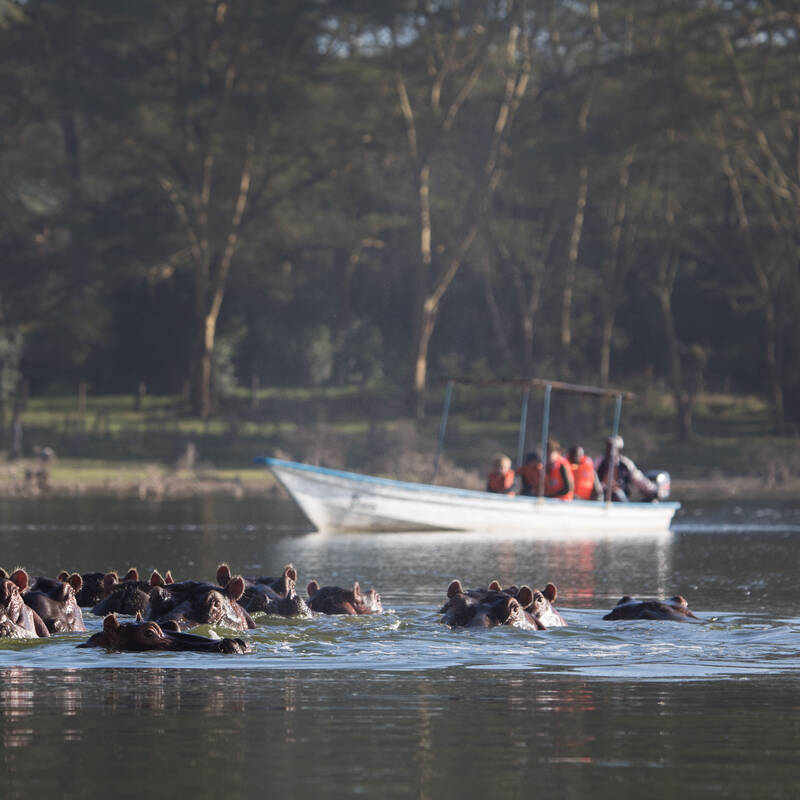
Lake Bogoria National Reserve
Half or full day
Seeing the Rift Valley's iconic pink flocks of flamingos massing on one of the region's lakes can be a somewhat hit-and-miss affair since lake water levels rose after about 2014 and the ecology of several of them changed significantly. Lake Bogoria, however, in the northern Rift, still usually retains some large flocks of many thousands of lesser flamingos.
More about Lake Bogoria visit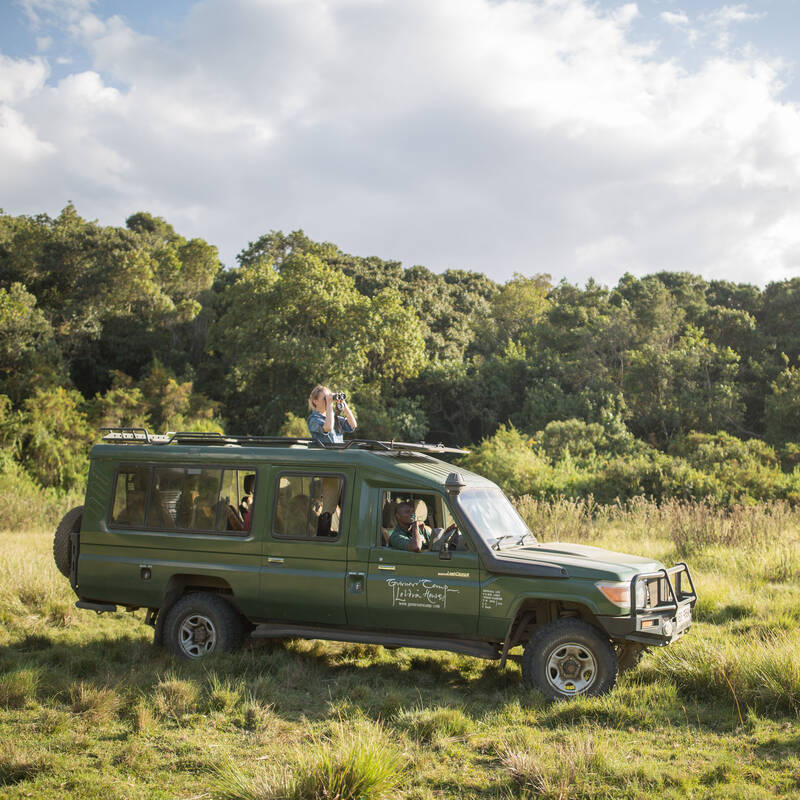
Lake Nakuru Safari
Half or full day
Drive into one of Kenya's best-known national parks to explore the lakeshore, woodlands, cliffs and plains around this iconic lake. While the flamingos may no longer be here, Nakuru has some key mammals, including both black and southern white rhinos, lions, leopards and Rothschild giraffes.
More about Lake Nakuru SafariOther lodges in Rift Valley
Alternative places to stay in this same area.
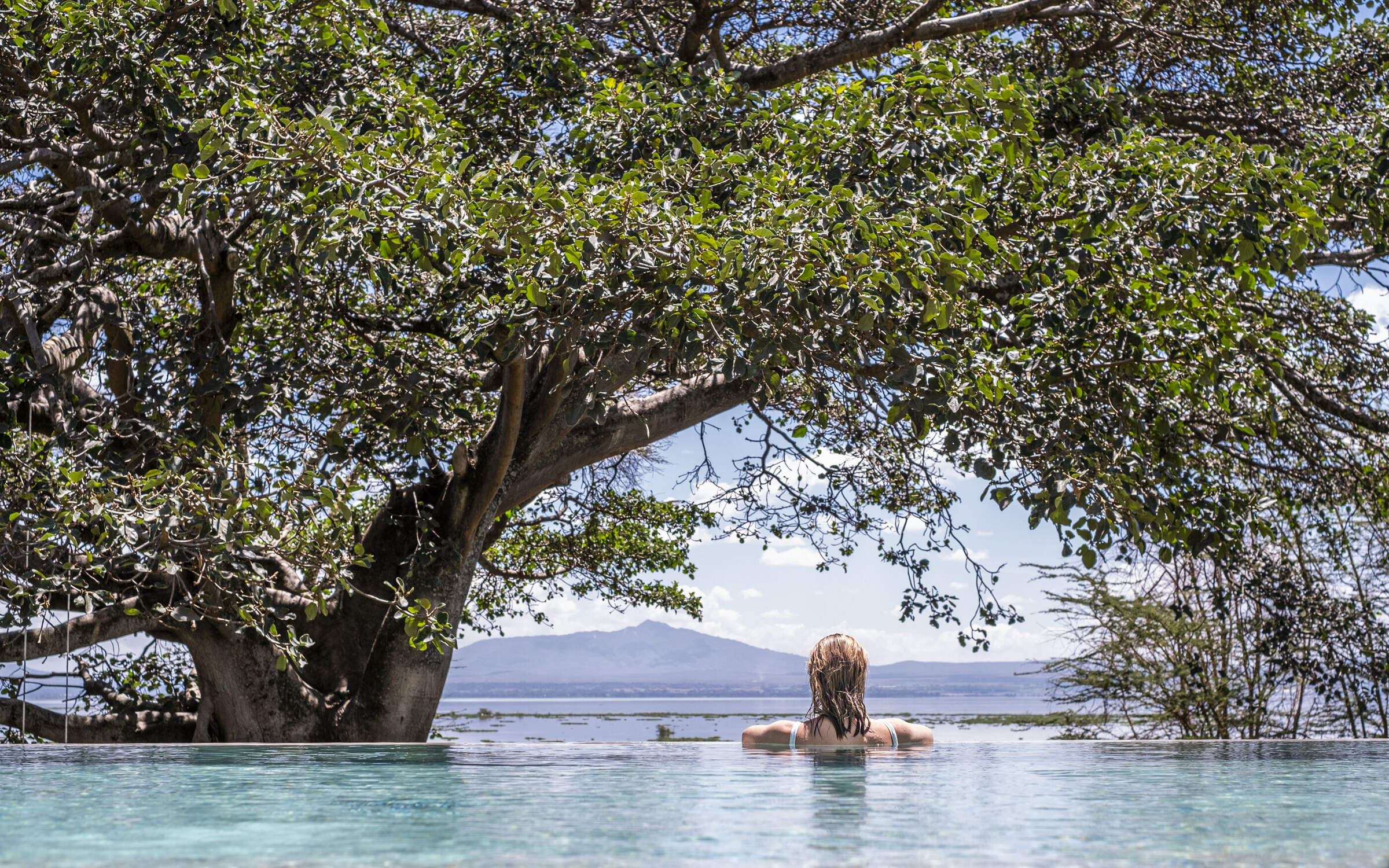
Loldia House
Loldia House is a comfortable, country house lodge on the shores of Lake Naivasha in the heart of Kenya's Great Rift Valley.
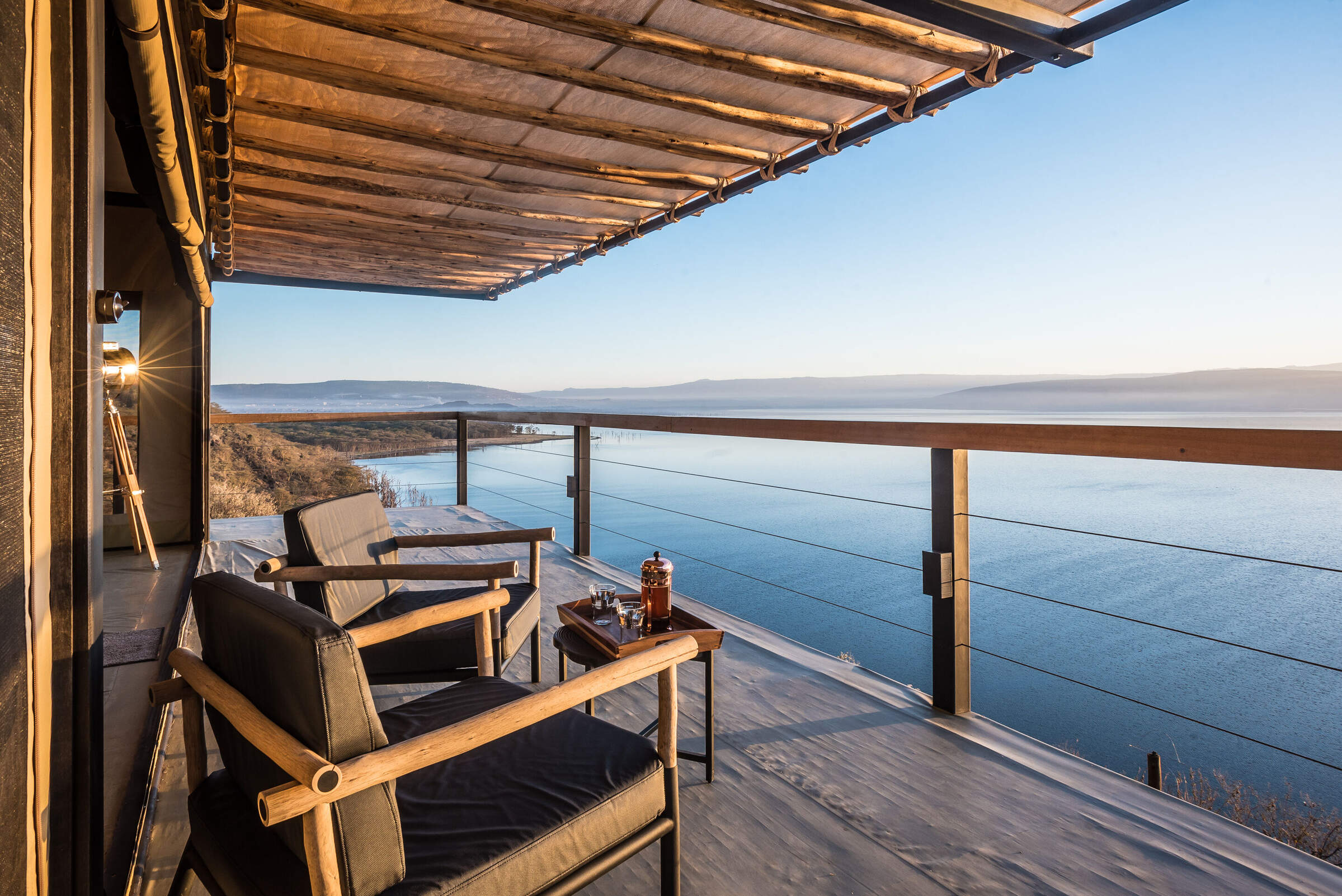
The Cliff
The Cliff is a comfortable, luxury tented camp overlooking Lake Nakuru, in the heart of Kenya's Great Rift Valley.
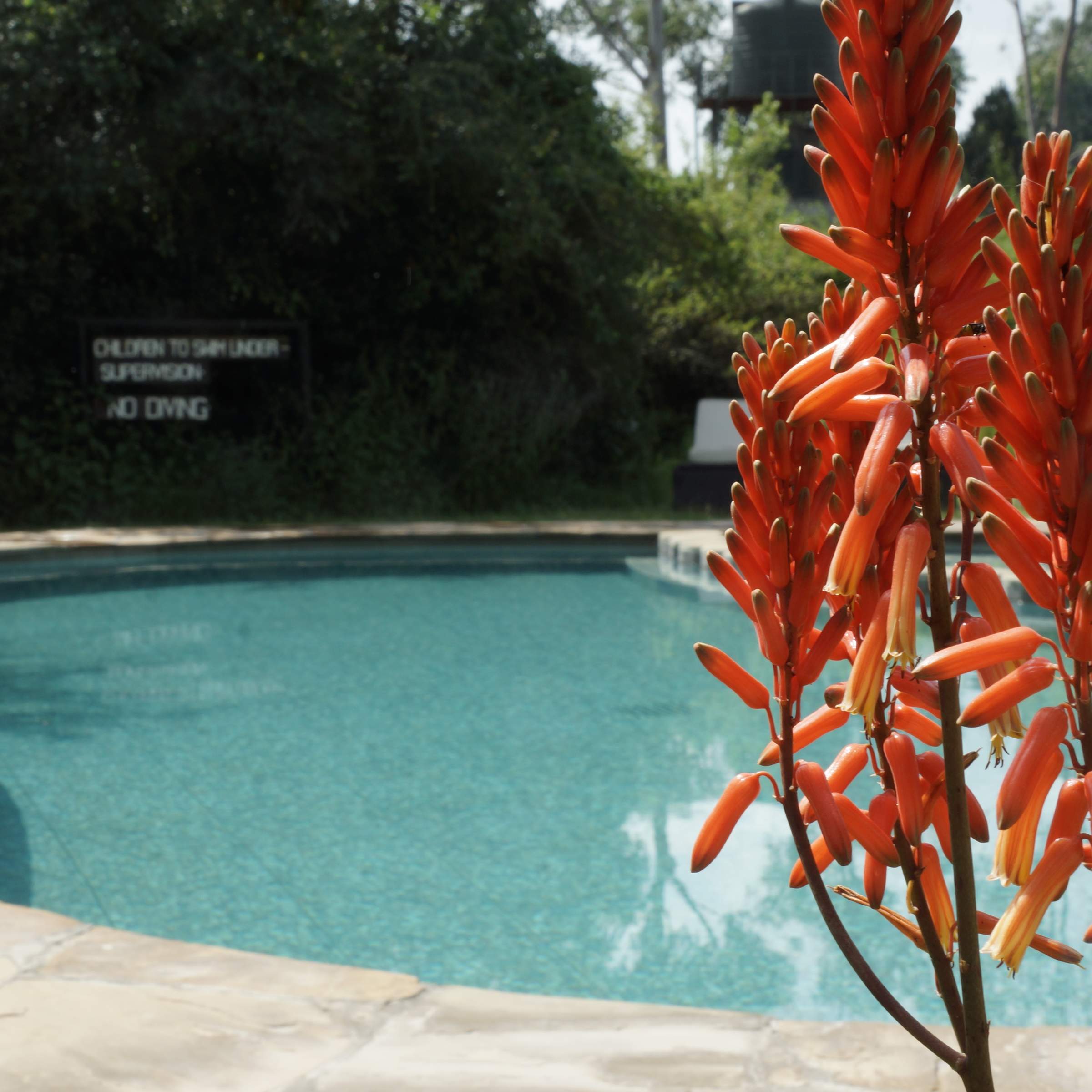
Mbweha Camp
Mbweha Camp is a well-established safari lodge on private land close to the Nderit Gate of Lake Nakuru National Park in Kenya's Great Rift Valley.
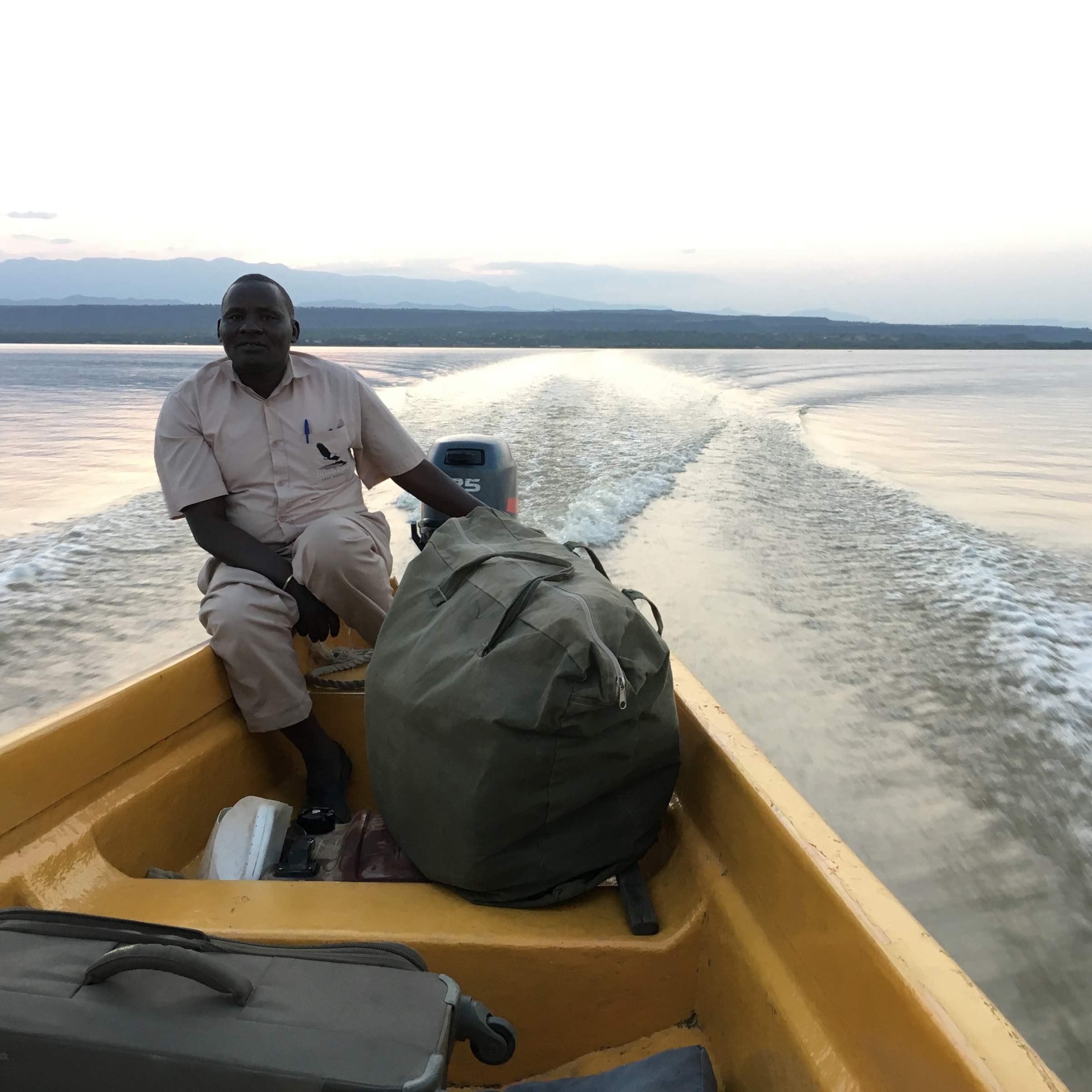
Island Camp Baringo
The birding magnet of Island Camp Baringo occupies a part of Ol Kokwe Island In Lake Baringo, in the Great Rift Valley in Kenya.
When to go to Rift Valley
Our month by month guide: What it's like to visit Tumbili Cliff Lodge in Rift Valley
Jan
Feb
Mar
Apr
May
Jun
Jul
Aug
Sep
Oct
Nov
Dec
Kenya in January
Clear, hot days and warm nights make this high season a popular time for safaris and it’s also good for diving and snorkelling as water clarity is excellent and gets better as the dry season progresses. Most lodges and tented camps treat January after the New Year week is over, as mid-season, making it a good compromise in terms of value for money with reasonably reliable, dry weather and some greenery left in the landscape.
Expert Africa bases its description of climate and weather in January, like the other months of the year, on the climate records of roughly the last 100 years, and it's fair to say that the weather and seasons since the beginning of this century have been highly irregular and unpredictable.
- On average, January is the second driest month of the year
- Elephants dig waterholes in the dry riverbed in the Samburu reserve.
- Wildebeest and many antelope have their calving season, to February.
- Migrant birds are seen in huge numbers, especially in the Rift Valley.
- Sea water clarity around the coral reefs generally good.
Our view
Fantastic: the very best time to visit
Weather in January
Kenya in February
With the short dry season well established, the grass grazed down and wildlife gathering close to water points, this is still a good time for a safari. Good water clarity in the Indian Ocean's coastal waters makes for excellent diving and snorkelling conditions.
Expert Africa bases its description of climate and weather in February, like the other months of the year, on the climate records of roughly the last 100 years, and it's fair to say that the weather and seasons since the beginning of this century have been highly irregular and unpredictable.
- On average, February is the driest month of the year.
- It’s sometimes possible to swim with whale sharks at Diani Beach.
- Migrant birds are still seen everywhere, especially near water.
- This is usually peak calving season for wildebeest and many antelopes.
- This month is often the hottest of the year, especially on the coast.
Our view
A very good time to visit
Weather in February
Kenya in March
Hot, increasingly humid weather – with good diving and snorkelling conditions at the start of the month – gives way to rains and lower accommodation costs. Expert Africa bases its description of climate and weather in March, like the other months of the year, on the climate records of roughly the last 100 years, and predicting the seasons since the beginning of this century has been difficult.
March is the month when – traditionally – intensely hot conditions build up until a cloudburst finally happens at the end of the month or in early April, to relieve the humidity. As ever, regional variations across the country can greatly impact on visitors' experiences.
- Sea-water clarity is best for diving before the long rains start.
- Visitor numbers are low, though the Easter holidays can be busier.
- Night skies can be scintillatingly clear in early March.
- Cropped down savannah grasses can make it easier to see the wildlife.
- Temperartures climb high, especially at lower elevations.
Our view
A good time to visit, with pros & cons
Weather in March
Kenya in April
April sees the full onset of the southeast monsoon wind or kusi, which heralds the long rains. Temperatures drop soon after the rains are established and you’ll often have facilities largely to yourself in this more affordable low season, sometimes known as the "green season". The bush quickly springs to life, with greenery sprouting almost before your eyes. While you're likely to get a fair number of heavy showers, the breaks in the rain can yield sparklingly clear conditions.
With the dust settled and bright sun piercing the clouds, conditions can be sublime for photography, especially first thing in the morning or in the late afternoon with another storm brewing. You may be lucky, or you may find conditions very wet and muddy.
- A wet month, the coast often gets more than 300mm (12in) of rain.
- Sunny spells can provide great light for photography.
- Buffalo and zebra calving season often happens in this month.
- Baby crocodiles hatch, for example on Central Island in Lake Turkana.
- Palearctic migrant birds gather to fly north to breeding grounds.
Our view
A time to avoid if possible
Weather in April
Kenya in May
While game viewing can be trickier as vegetation runs riot, between the cloudbursts the colours and light are great for photography at this time of year. Expert Africa bases its description of climate and weather in May, like the other months of the year, on the climate records of roughly the last 100 years, and while it's reasonable to expect heavy rains in many parts during this month, especially on the coast, the rains don't always come evenly or in some areas come at all.
In an El Niño year, the so-called long rains that normally are established across much of the country by May can be meagre, to the despair of farmers. On the other hand in a La Niña year, the long rains can bring floods. On the coast, the monsoon winds make the climate much more predictable, with heavy rains common throughout this month.
- Frogs breed in the ponds in the Arabuko Sokoke Forest near Watamu.
- Wildebeest, impala and other grazers are in rut (the breeding season).
- Kilimanjaro looks its best as heavy rain falls as snow on the summit.
- There's a sharp peek of rainfall on the coast with many rainy days.
- Accommodation prices are uniformly low, while some camps close.
Our view
A time to avoid if possible
Weather in May
Kenya in June
The rains give way to cloudy, cooler weather, often making for comfortable conditions by the end of the month, especially in the highlands. Starting from mid-June or the beginning of July and running until the end of October, this is the high season, and accordingly has higher accommodation rates and – at least until early September – higher numbers of visitors.
While the early part of June can often be rainy on the coast, it can be a great time to go on safari, with fresh greenery, many young animals and good photographic conditions with clear air.
- The Taru Desert, inland from the coast, is carpeted with flowers.
- The Lake Turkana Cultural Festival is held in Loiyangalani.
- Madaraka Day (commemorating self rule) is 1 June.
- The annual Lewa marathon runs a course through the wildlife.
- The Diani Rules "sports" event rips up the rulebook at Diani Beach.
Our view
A good time to visit, with pros & cons
Weather in June
Kenya in July
Kenya’s “winter" season sets in (winter is a misnomer but locals feel the change), and the highlands can be rather grey. Skies are often cloudy and the days can be surprisingly cool, with an average daytime high in many highland safari areas of 15-20°C and night-time temperatures dropping below 10°C in Nairobi and the highlands. Lower parts of the country and the coast are usually warm and dry, typically reaching highs of around 25°C with lows in the high teens.
As this is the start of the high season, coinciding with the usual arrival of the wildebeest migration in the Maasai Mara, July is a busy month. Ask your Expert Africa specialist to advise on how to avoid the crowds, which is not that difficult to do.
- The wildebeest migration usually reaches the Maasai Mara in July.
- Simbi Lake (Kisumu) and Crater Lake (Naivasha) can attract flamingoes.
- Watersports start to pick up and some surfing is possible at Malindi.
- Afternoon thunderstorms are a common feature in the Maasai Mara.
- The sea can be choppy along the coast, making diving difficult.
Our view
A good time to visit, with pros & cons
Weather in July
Kenya in August
The Great Migration fills the plains of the Maasai Mara, and school’s out, so the park roads are full of tourists – ask your Expert Africa specialist for advice on crowd avoidance tactics. Choose a private conservancy rather than a public national park or national reserve for quieter conditions.
Like July, August is generally mild and relatively dry in the safari areas, but it can be very chilly in the highlands, even in the middle of the day, and hail occasionally falls above altitudes of around 2,400m (8,000ft). Nairobi can be disappointingly overcast, with low cloud.
- Apart from Christmas holidays, this is the busiest month of the year.
- Late August sees peak wildebeest drama at the Mara River crossings.
- Coastal winds are good for kite- and wind-surfing.
- Few mosquitoes are around at this generally dry time of year.
- The annual Camel Derby takes place in the Samburu capital, Maralal.
Our view
A good time to visit, with pros & cons
Weather in August
Kenya in September
The skies clearing of cloud signals the start of hot, dry weather with little chance of rain – and, after the first few days of the month, far fewer visitors – making the latter part of September a good time for a quieter safari. While early September is often good for dramatic migration crossings along the Mara River, you might consider deliberately postponing your trip until later in the month, when the migration can still be very impressive and visitor numbers fewer.
If tourist surges are somewhat predictable, however, the patterns of the wildebeest migration are more volatile, and like all of Expert Africa's climate and weather assessments, they are based on accumulated years of experience rather than guaranteed certainty.
- This is still high season, with prices to match.
- Many river crossings take place on the Mara river in both directions.
- Natural bush fires flush out insects and small animals for predators.
- The Rift Valley Music Festival takes place by Lake Naivasha.
- With school holidays over by early September, late-month is quieter.
Our view
Fantastic: the very best time to visit
Weather in September
Kenya in October
Still hot, mostly dry and not too busy, this is many people’s preferred month for a safari, and it’s also good for diving and snorkelling. The wildebeest and zebra herds of the great migration are often still to be seen, though in dwindling numbers. The swamps of Amboseli attract thirsty wildlife including large herds of elephants.
While we wouldn't expect much rain across most of the country this month, the climate has become so unpredictable that you can never say never, and the possibiity of the short rains – usually associated with November to mid-December, starting early, can't be discounted.
- This month sees the tail end of the great migration in the Mara.
- Palearctic migrant birds start to arrive, staying until March.
- Turtle nests hatch at Watamu, until November.
- Amboseli elephants focus on the swamps for their daily water.
- The Indian Ocean monsoon winds turn from southeast to northeast.
Our view
A very good time to visit
Weather in October
Kenya in November
The northeast monsoon wind or kaskazi heralds the start of the “short rains", usually some time in the second half of the month. From November to mid-December, this is the low season, and accordingly has lower accommodation rates and lower visitor numbers. Across most of the country you can expect warm, somewhat cloudy weather, with occasional heavy showers and localised flooding.
Expert Africa bases its description of the climate in November, like the other months of the year, on the records of roughly the last 100 years, and it's fair to say that the seasons since the beginning of this century have been highly irregular and unpredictable: some years the short rains don't come at all, or don't reach every part of the country. In an El Niño year, the November short rains can be very heavy, but in a La Niña year, they can fail completely.
- Swimming with dolphins in Lamu can be done from now until April.
- Birders gather at Ngulia in Tsavo West to ring Palearctic migrants.
- The Lamu Cultural Festival takes over the town and Lamu Creek.
- Agricultural shows often take place regional market towns.
- This is low season, so camps can be great value, with special offers.
Our view
A good time to visit, with pros & cons
Weather in November
Kenya in December
In a typical December, the rains usually finish by middle of the month, leaving the landscape looking its best, under clear blue skies, and heralding the start of the second peak tourist season from around 20 December to the first week of January. Our assessment of the likely weather in December, like the other months of the year, is based on climate records, and it's fair to say that the seasons since the beginning of this century have been highly irregular and unpredictable.
Christmas can sometimes be wet, but most years the rains have finished a week or two earlier, with the festive season ushering in the perfect combination of clear skies and sunshine by day and starry nights.
- Christmas and New Year are busy, with the lodges and camps full.
- Rates are highest after 24 Dec, with supplements on public holidays.
- Republic Day and Independence day are celebrated on 12 December.
- Good kite- and wind-surfing restarts, with strong northeasterly winds.
- Mango season begins, providing excitement for primates and elephants.
Our view
A good time to visit, with pros & cons
Weather in December

Looking for inspiration on where to travel next?
Visit our trip chooser to explore your options and find inspiration for your perfect African adventure
Inspire me